At the end of this nitrogen cycle lesson plan, students will be able to diagram the nitrogen cycle, including all the processes involved in changing N2 into usable nitrogen. Also, they will be able to explain how humans alter/impact the nitrogen cycle. Each lesson is designed using the 5E method of instruction to ensure maximum comprehension by the students.
The following post will walk you through each of the steps and activities of the nitrogen cycle lesson plan.
ENGAGEMENT
Objective Introduction
At the beginning of the lesson, the class will do a Think-Pair-Share to discuss the objective.
Class Activity
- Show students the YouTube video with the provided link.
- Tell them to look for steps in the nitrogen cycle.
Student Activity
- After watching the video, brainstorm with the class the steps they recognize from the video.
- Have students write these steps on your board.
- Make sure the students have listed all the following words:
- Atmospheric Nitrogen
- Rhizobium bacteria
- Lightning strikes
- Ammonia NH4
- Nitrifying bacteria
- Nitrates NO3
- Plants make proteins
- Animals eat plants for proteins
- Dead plants
- Animal waste
- Decay
- Denitrification
- As the students brainstorm these steps clarify any misunderstanding
- Have the students get into groups of 3 or 4
- Have each group draw the nitrogen cycle using the correct words
- If time allows, have them draw diagrams of their cycle
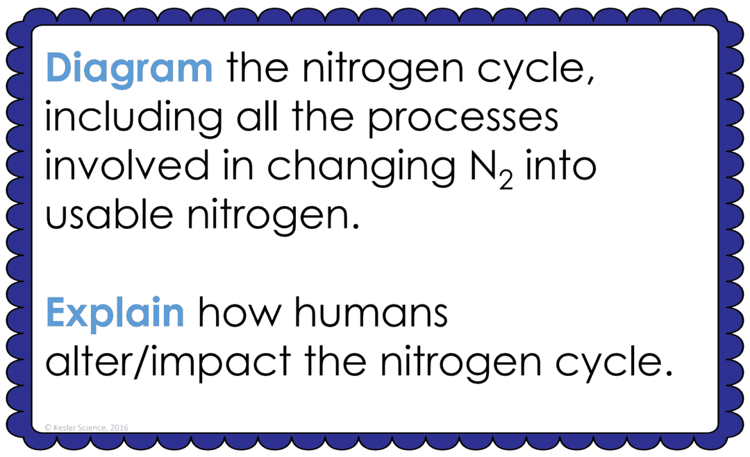
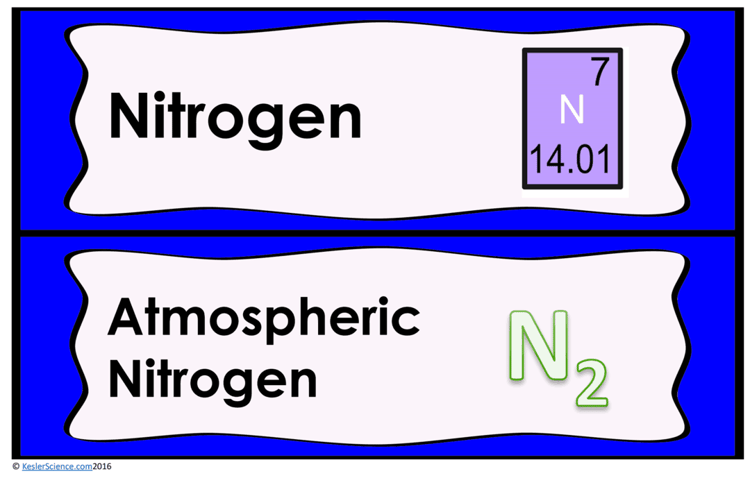
The teacher will help to clear any misconceptions about the nitrogen cycle. A major misconception is that students don’t understand that there may be more pathways in a given cycle.
Estimated Class Time for the Engagement: 20-30 minutes
EXPLORATION
This student-centered station lab is set up so students can begin to explore the nitrogen cycle. Four of the stations are considered input stations where students are learning new information about the nitrogen cycle and four of the stations are output stations where students will be demonstrating their mastery of the input stations. Each of the stations is differentiated to challenge students using a different learning style. You can read more about how I set up the station labs here.
EXPLORE IT!
Students will be working in pairs to better understand the nitrogen cycle. In this station, students manipulate cards and place them on diagrams showing their understanding of the nitrogen cycle. Students will follow the steps and record their observations on their lab sheet.
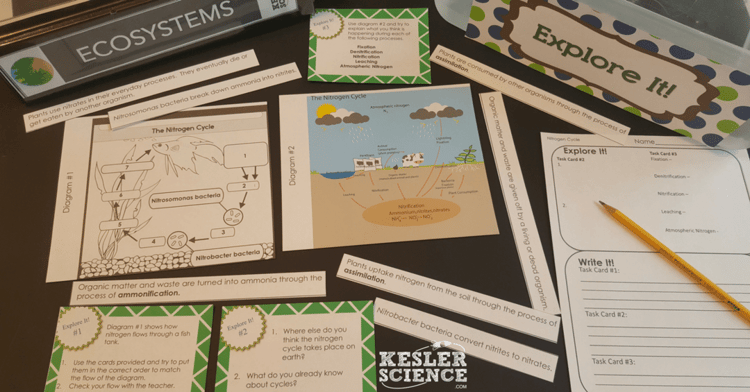
WATCH IT!
At this station, students will be watching a short video explaining the nitrogen cycle. Students will then answer questions related to the video and record their answers on their lab station sheet. For example: Where is nitrogen found in abundance as N2? What percentage does it make up? How is this process of “fixing” nitrogen from the atmosphere different from the way carbon is fixed in the carbon cycle? Explain how nitrogen can get back into the atmosphere.
RESEARCH IT!
The research station will allow students to explore an interactive web page that helps them to understand the nitrogen cycle. Students will be instructed to complete a few tasks and record answers on their lab sheets.
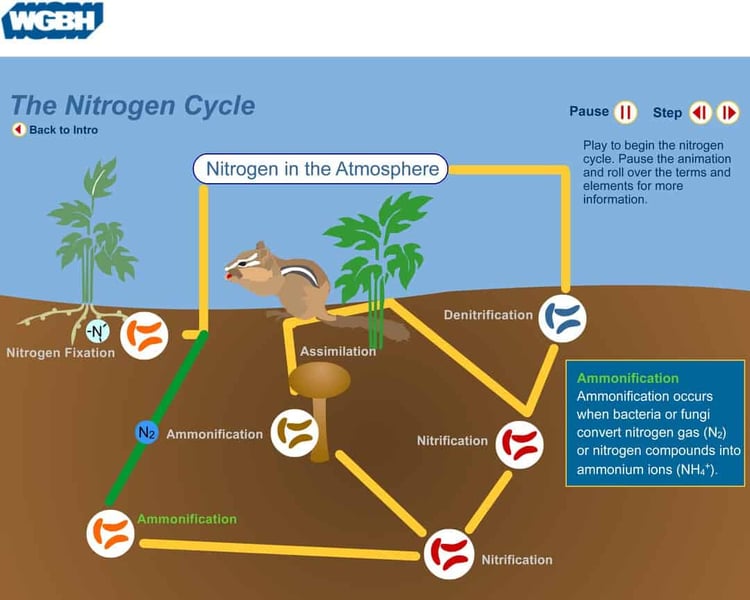
READ IT!
This station will provide students with a one page reading about the nitrogen cycle. There are 4 follow-up questions that the students will answer to show reading comprehension of the subject.
ASSESS IT!
The assess it station is where students will go to prove mastery over the concepts they learned in the lab. The questions are set up in a standardized format with multiple choice answers. Some questions include: How is the nitrogen cycle similar to the carbon cycle? What role do bacteria have in the nitrogen cycle? Which process allows organisms to use nitrogen-based molecules? Which statement is not factual?
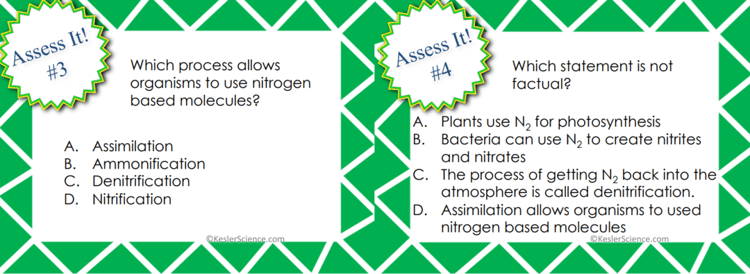
WRITE IT!
Students who can answer open-ended questions about the lab truly understand the concepts that are being taught. At this station, the students will be answering three task cards: Explain how nitrogen flows through the nitrogen cycle. Why is the nitrogen cycle important? How does the law of conservation of mass relate to the nitrogen cycle?
ILLUSTRATE IT!
Your visual students will love this station. Students are to draw a picture that demonstrates their knowledge of the nitrogen cycle. Their drawing will have labels such as nitrogen fixing, denitrification, assimilation, ammonification, nitrates, nitrites, plant uptake, dead matter, waste, and nitrogen gas.
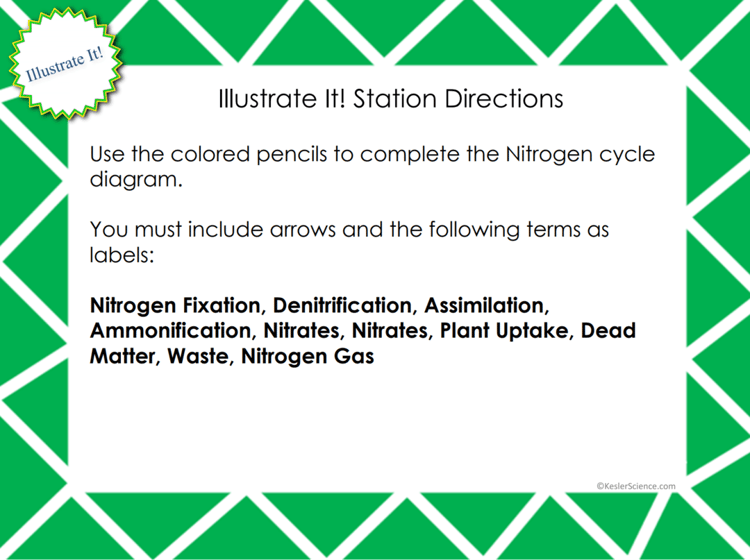
ORGANIZE IT!
Students at this station will match the sets of cards. Sets include a nitrogen cycle factor with the description. Once students have completed their organization, the teacher will check their understanding.
Estimated Class Time for the Exploration: 1-2, 45 minute class periods
EXPLANATION
The explanation activities will become much more engaging for the class once they have completed the exploration station lab. During the explanation piece, the teacher will be clearing up any misconceptions about the nitrogen cycle with an interactive PowerPoint, anchor charts, and notes. The nitrogen cycle lesson includes a PowerPoint with activities scattered throughout to keep the students engaged.
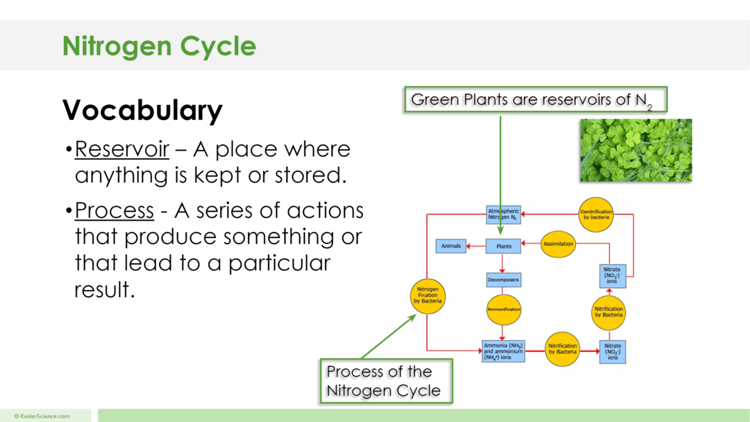
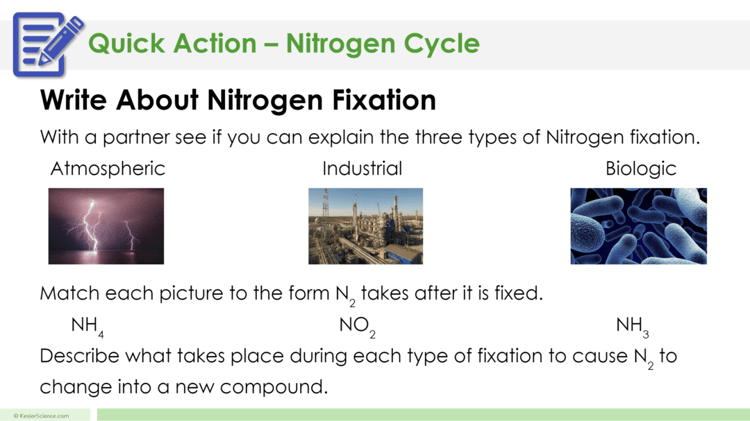
The students will also be interacting with their journals while taking notes from the PowerPoint. If you have students that need modified notes, the 5E lessons come equipped to help give every student access to the lesson.

Estimated Class Time for the Exploration: 2-3, 45 minute class periods
ELABORATION
The elaboration section of the 5E method of instruction is intended to give students choice on how they can prove mastery of the concept. When students are given choice the ‘buy-in’ is much greater than when the teacher tells them the project they will have to create. The elaboration project will allow students to create a model, game, technology presentation, or a children’s book.

Estimated Class Time for the Elaboration: 2-3, 45 minute class periods (can also be used as an at-home project)
EVALUATION
The final piece of the 5E model is to evaluate student comprehension. Included in every 5E lesson is a homework assignment, assessment, and modified assessment. Research has shown that homework needs to be meaningful and applicable to real-world activities in order to be effective. When possible, I like to give open-ended assessments to truly gauge the student’s comprehension.
Estimated Class Time for the Elaboration: 1, 45 minute class period
DOWNLOAD THE FULL LESSON NOW
The full lesson is available for download from my TpT store. Save yourself a ton of time and grab it now.
Download Over $100 in FREE Resources
For Middle School Science
Simply create a login below and gain immediate access to a selection of our Kesler Science product line worth $100 - for FREE. There's a full version of every product type! You'll also join tens of thousands of middle school science teachers who receive timely tips and strategies straight to their inbox.






